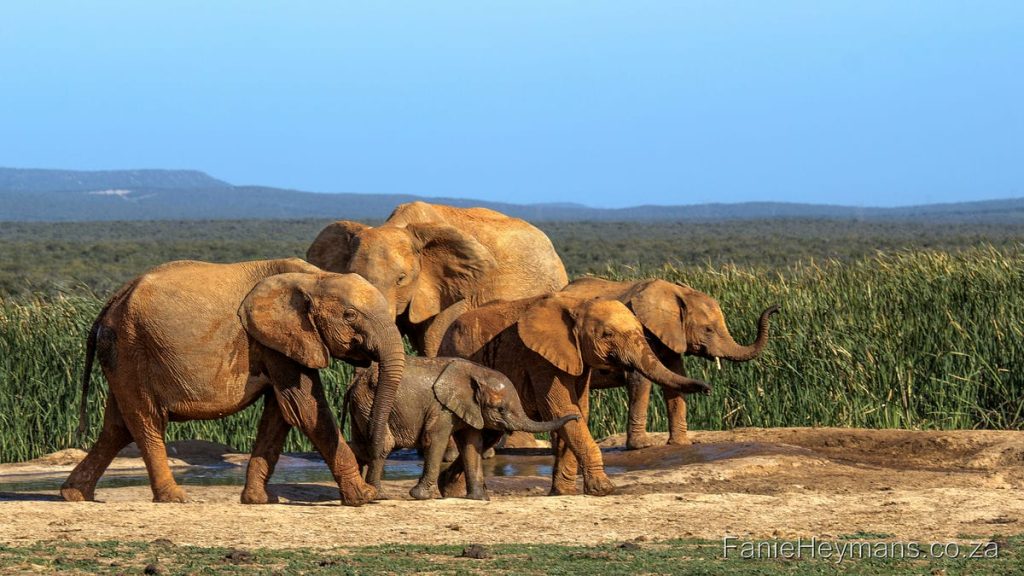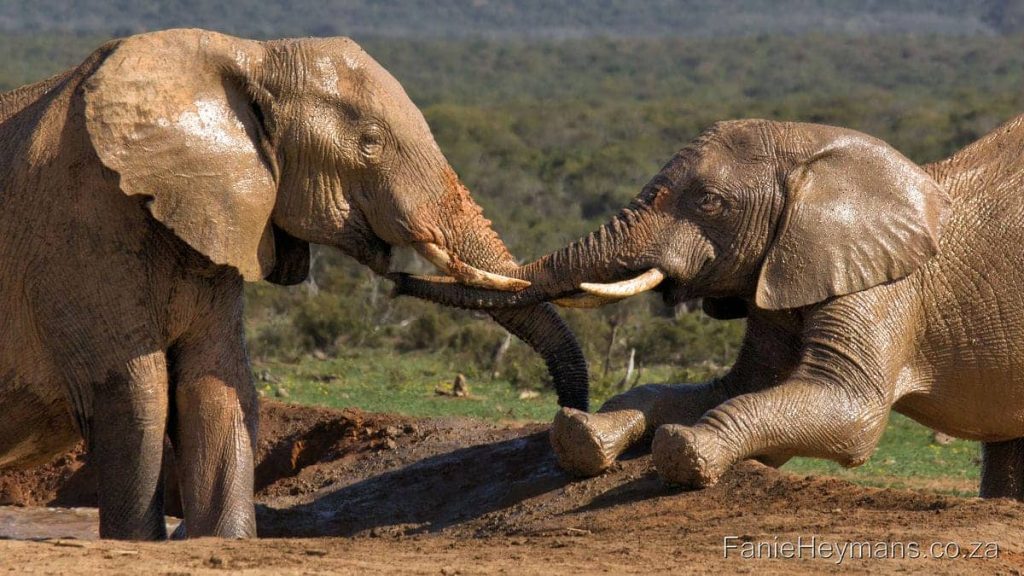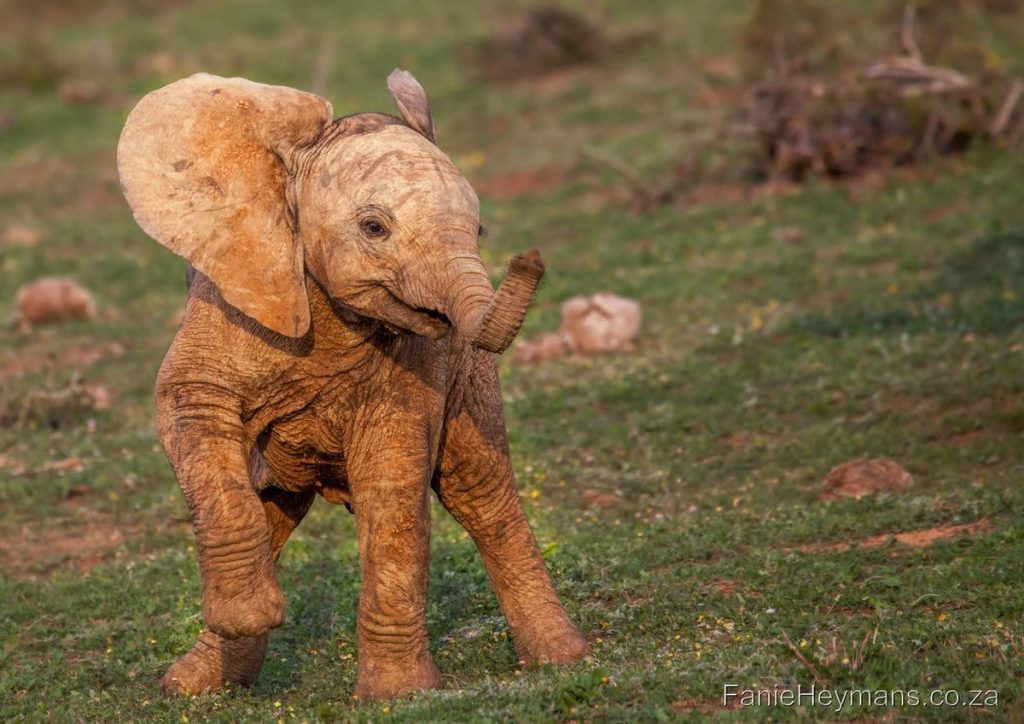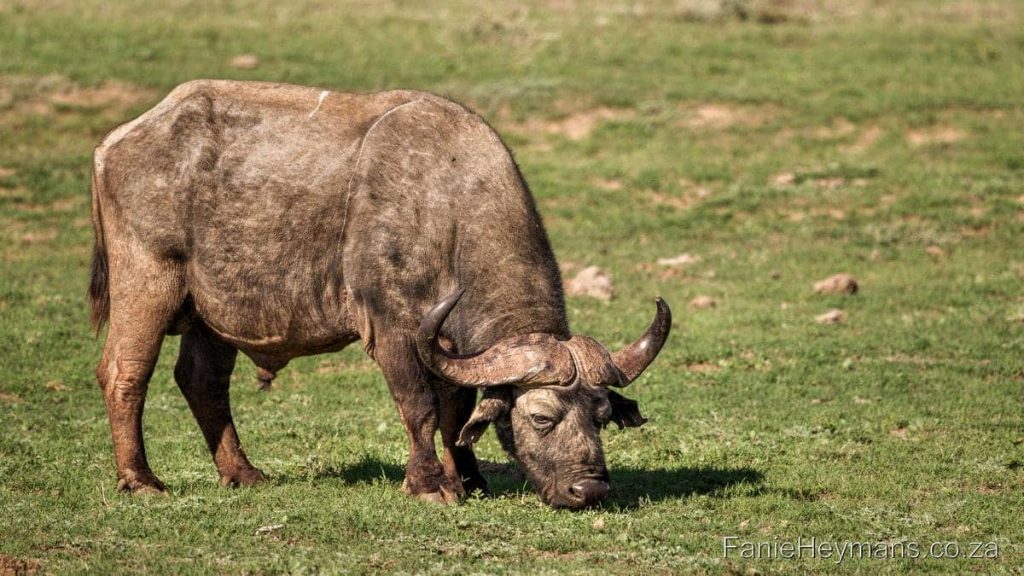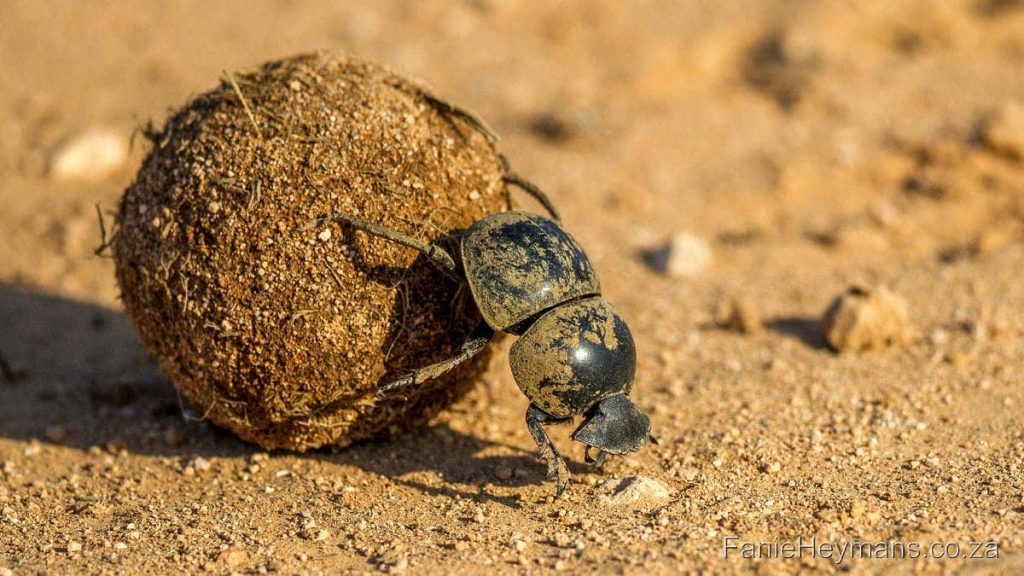Addo Elephant Park
First visit to ADDO Elephant Park, South Africa.
Elephant bull fight.
The ADDO Elephant National Park, South Africa’s third largest National Game Park, is situated in the Eastern Cape, about 60 Km north from Port Elizabeth. It is a paradise for elephant viewing. After we have completed the tough, but scenic 5-day Otter hiking trail, we wanted to relax, and booked into the ADDO’s lovely safari tents for 5 nights. This was our first visit to the ADDO Elephant Park, and definitely not the last. If you want to get up close and personal to the biggest land mammal, namely the Elephant, then this is the place to be.
Herd of Elephants
Herd of Elephants. A herd of elephants is called a parade. Elephants can live up to 70 years in the wild, and are very intelligent mammals. Photographed in Addo in South Africa.
The accommodation in the Safari tents were very clean and comfortable. Ablution and kitchen facilities are neat and clean, and near the tents. The large campsite is also neatly laid out, with plug points. Ablutions and kitchen facilities were well maintained. The gates opened up at 07:00 until 19:00, depending on the season. There are tar roads as well as gravel roads to travel on. Because it is a semi-arid to arid area, with no natural water, most of the waterholes are fed by boreholes.
Female Elephant with calf’s
Female Elephant with two baby elephants at Hapoor waterhole in Addo National Park South Africa.
There are several waterholes, Rooi dam,” Hapoor” Dam, “Domkrag” Dam, to name but a few. For us, the best water hole, where we had the most sightings and obviously got our best pictures, was at “Hapoor” Dam. Gorah Loop is also well worth to visit in the early morning or late afternoon, to get good pictures of Antelope and Warthogs. There are still other sections of the park that we did not had time to explore, like the coastal and northern part of the park.
Elephant herd at Nampoor waterhole
Female Elephant with two baby elephants at Hapoor waterhole in Addo National Park South Africa.
There are several waterholes, Rooi dam,” Hapoor” Dam, “Domkrag” Dam, to name but a few. For us, the best water hole, where we had the most sightings and obviously got our best pictures, was at “Hapoor” Dam. Gorah Loop is also well worth to visit in the early morning or late afternoon, to get good pictures of Antelope and Warthogs. There are still other sections of the park that we did not had time to explore, like the coastal and northern part of the park.
Two Elephant calves
Two Elephant calf’s playing in mud at Hapoor waterhole. The trunk serves as a nose, hand, a tool for gathering food, siphoning water and a lot more. They use their big wide, arching ears to cool their body.
For us, this differs from the other parks, i.e. Kgalagadi Trans frontier Park and the Kruger National Park. At these parks, you wake up early, go out to view game when the gates open. Then return to camp at 10:00 or 11:00 am, for lunch and a possible siesta. During this time of day, you will not see much animals or birds, since it is too hot. We normally will resume our game viewing for the day at 15:00 until the gates close. In these camps, the best time for photography is early morning and late afternoon, when the harsh sunlight is soft and perfect for photography.
Elephant calves spend several years being dependent on mother, and suckle for a period of up to five years. Elephant babies are usually born at about 90kg and 3 feet tall. They’re pretty clumsy for about three months after they’re born and have hardly any control over their trunks.
One of the most common vegetation that is seen in the area, is the succulent Spek boom. It is a low growing coastal scrub plant and the main food source for the elephants. Spek boom flourishes if it is grazed upon and regenerates very quickly. Elephants can consume up to 200kg of Spek boom per day. It is also said that it is also excellent in converting carbon dioxide. Elephants can weigh up to 6000kg and measuring up to 3.3m at the shoulder.
Two Elephant bulls playing in mud at Nampoor waterhole
Another favourite subject to photograph, are the baby Elephants. They are very cute. They love to chase birds and small antelope and play big boy with their small trunks waving in all directions. We also have experienced that the ADDO Elephants are more relaxed and accustomed to vehicles, than elephants in other parks. One can get much closer to them to photograph. But please keep in mind it is still a wild animal, so don’t take changes. Be careful not to park your vehicle between a mother and her calf, as she might get aggressive. Rather keep a reasonable distance from them.
Baby Elephant
Baby Elephant playing with its trunk running around. They can’t see very well when they are born, but much like human babies, they can recognize their mothers by scent, touch, and sound.
If a calf still fits under his mothers’ belly, it is still less than a year old.
Other animals that we were able to see:
Buffalo
African buffalo. The African Buffalo, aka the Cape Buffalo, is the only native African mammal member of the Bovini tribe. It is one of South Africa most aggressive and feared Mammals.
Zebra
Zebra and Foal. Native to Africa, zebras are distinctive single-hoofed mammals that live in herds.
Kudu
Kudus are a species of African antelopes majestic in their looks, with their twisted horns making them quite distinct from other antelopes. These antelopes are browsers and eat leaves and shoots from a variety of plants.
Rooi Hartebeest
The Red Hartebeest is a large, antelope. They live in herds up to 20 and are grazers. Apparently, their eyesight is not that good.
Leopard Tortoise
A big Leopard tortoise (in Afrikaans “berg skilpad”), was crossing the road at our last trip to the Addo. They are the largest tortoises in South Africa.
For the bird lovers, this is a haven with more than 160 bird species. Bokmakierie, Cape Bunting, Cape Robin Chat, Fork Tailed Drongo, Black Korhaan, Blue Crane and Secretary to name a few. Download a Bird Checklist from SANParks website. It will indicate all the bird species available in this area.
Bokmakierie
A large, sturdy olive-grey and yellow bush shrike with a distinctive black chest band that arc’s up to the bill base, forming a broad necklace.
Addo Flightless Dung Beetle
Then there are the small creatures. This Addo Flightless Dung Beetle is a large beetle that is only found in the Addo. The females lay on single egg in the dung ball. The can roll dung up to 50 times their own weight.
Would we go back to ADDO? Definitely, without a doubt – We had scores of elephants at the waterholes. ADDO is totally different than other parks and that is what we liked about it as mentioned before, it is one of the best places in South Africa to photograph Elephants in the open.
We visited the park again and camped. The vegetation was very dense, due to heavy rain fall. We did not see as much elephants, but still enjoyed a few good sightings. We still have to go and meet the famous lion called “Sylvester”, that escaped from a former sanctuary in the Karoo, and is now relocated to ADDO.
Check out some more of my photos at 500PX and PhotoPixSA and the Trip Reports and Hiking Trails






